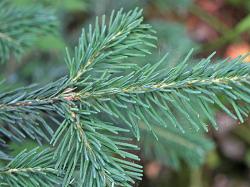Christmas Trees For Connoisseurs
November 29, 2017 | 1 min to read

Michiganders that purchase a real tree for the holidays each year are likely familiar with many of the “tried and true” Christmas tree species that usually appear at tree lots and choose-and-cut farms such as Fraser fir, balsam fir, Douglas fir and blue spruce. Michigan Christmas tree growers are an innovative lot, however, and consumers may find exotic or lesser-known species as they’re looking for this year’s tree.
Why exotics?
Strictly speaking, an exotic is tree species that is not native to our area. In Michigan, we grow some conifers that are native Christmas trees like balsam fir, white spruce and white pine, but also commonly grow other trees that are not native like Fraser fir and blue spruce. When talking about Christmas trees, the term exotic has morphed into meaning less common or unusual.
Growers produce exotics to give their customers a greater range of choices when they come to their farm or tree lot. In certain cases, exotics may be better adapted to certain soil conditions, such as high soil pH or wet soils, or more resistance to diseases. This allows growers to produce trees on sites they might not be able to otherwise. Some growers are interested in the botany of conifers and enjoy learning about and growing different and unusual species.
To read the rest of the story, please go to: Michigan State University Extension
